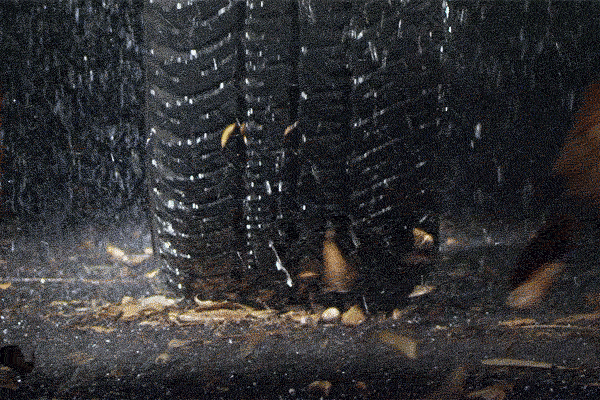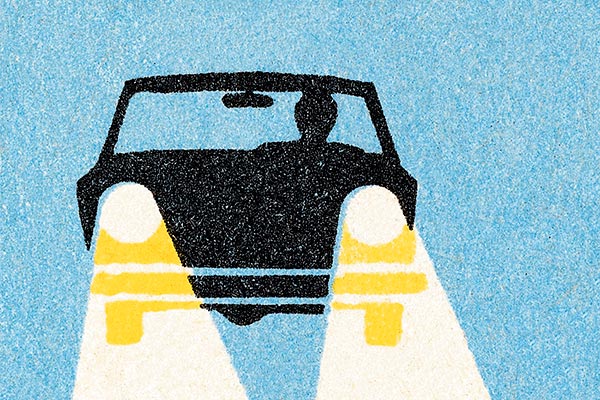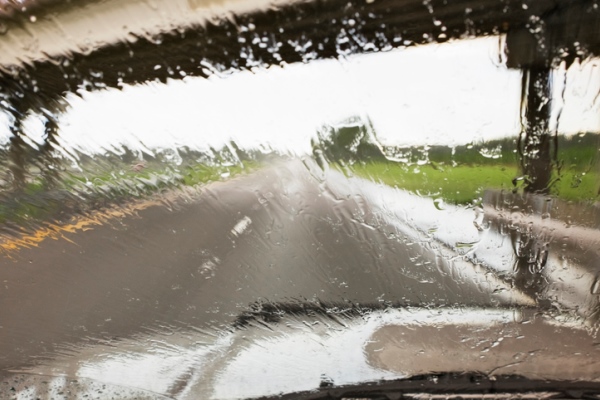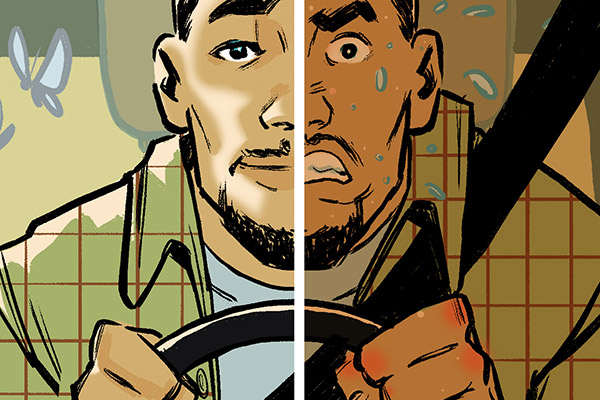Whether you’re commuting, road-tripping, or just running errands, chances are oversize and specialty vehicles will be part of the roadscape whatever route you take. Easy to spot, these vehicles’ moves can be unpredictable, so driving alongside them can be stressful or even dangerous—all good reasons why you need to know how to navigate around them safely.
“Larger vehicles can take more than double the distance to stop,” says Joe Giammona, CEO of 911 Driving Schools. To be on the safe side, don’t assume drivers of these massive machines will be able to look out for your safety. Instead, you must learn ways to drive among them—cautiously and courteously.
Road Rule 1: Give trucks, rigs, buses and RVs plenty of space.
Always give 18-wheelers space—way more than you’d give fellow passenger vehicles. For example, if you give cars a three-second distance, give buses and campers five seconds, and never drive next to any big vehicles, says Giammona. They could move into your lane unexpectedly, especially if your car is in their blind spot. One good rule of thumb for judging space around big rigs: If you can’t see the driver’s face reflected in the mirrors on a truck or large vehicle, the driver can’t see you.
Road Rule 2: Pass properly.
When you do encounter larger vehicles like big rigs and semi-trailer trucks, it’s important that you follow proper passing procedures to get by them safely and efficiently. Giammona has an easy way to remember the process: Use the acronym SMOG, which stands for “Signal, Mirrors (check side and rear views), glance Over your shoulder, and Go when it’s safe.” Don’t pass on the right and never cut anyone off. “Before moving in front of a vehicle, you should be able to see both its headlights in your rear view mirror,” says Giammona. “The driver [you’re passing] may flash his headlights when you signal to move in front, and that’s a way of acknowledging it’s safe to move back into the lane.”
Do not swerve in front of a truck or cause the driver to come to a sudden stop. It can take up to the length of a football field for a large truck to come to a complete stop. An 80,000-pound truck going 65 mph can take a full 300 feet to come to a stop after hitting the brakes.
Avoid “Squeeze Play.” Truck drivers sometimes need to swing wide to the left in order to safely negotiate a right turn, especially in urban areas. Drivers cannot see directly behind or beside them, so cutting in between the truck and the curb increases the possibility of a crash, or a “squeeze.” Pay attention to truck signals and give them plenty of room to maneuver.
Bus drivers with a full load of passengers may not slam on their brakes if a passenger car cuts them off. Given a choice between rolling over the car that just appeared in front of them or sending all of their passengers through the front windshield, the driver is likely to roll over the offending car.
Road Rule 3: Stop for light rails, trolleys and streetcars.
In 2016, there were 2,025 collisions between trains and cars at intersections, according to the Federal Railroad Administration Office of Safety Analysis. From a passenger vehicle’s perspective “light rails pose a bigger challenge than regular large vehicles, because they can’t move out of the way,” says Giammona. Most trigger nearby traffic lights to turn red when rail cars are approaching. Drivers should pay any special light rail signs and signals as much attention—and respect—as traffic lights to avoid an accident. They should always look both ways before crossing an intersection in case signals aren’t working.
Road Rule 4: Yield to emergency vehicles.
“If you see flashing lights or hear a blaring siren, slow down and safely pull over to the right side of the road or shoulder and stop,” says Giammona. This isn’t a time for fast maneuvering, which can cause accidents. Active ambulances, fire engines and EMS vehicles always have the right-of-way. Remember: this move-out-of-the-way protocol applies even if the emergency vehicle is coming toward you from the opposite direction.
Road Rule 5: Don’t rush construction vehicles.
It can be tempting to speed around slow-moving trucks, cranes and other specialty vehicles near job sites. Don’t. “Keep at least a four-second distance behind the vehicle and when safe, use those four seconds to pick up your speed to pass safely,” says Giammona. Using the SMOG method is also a smart move in this case. Additionally, respect all flaggers and other construction personnel who may be providing direction.
Road Rule 6: Approach animal-drawn vehicles with calm and caution.
A major issue with animal drawn vehicles is visibility. “Horse-drawn carriages tend to be dark in color, which makes them tough to see in low-light situations,” says Giammona. As with other specialty vehicles, leaving adequate space as a buffer is key. Giammona suggests maintaining a four-second following distance for an animal-drawn vehicle as well. Carriages also sometimes roll backwards, he adds. So if you’re coming up to a traffic light or stop sign behind one, leave more than a car’s length distance between your vehicle and the carriage.
Before passing, your impulse might be to honk or flash your brights, but Giammona advises against both actions because they can startle horses. Instead, slow down, turn on your emergency flashers to signal to other vehicles, and navigate slowly and safely around it. In this case, calm animals equal safe driving.
If you’ve ever been stranded on the road, having Emergency Road Service with GEICO can get you the help you need in a hurry. Add it to your policy for just pennies a day per vehicle for peace of mind wherever your travels take you.
By Danielle Blundell










Annette Silvis says,
Knew about the rule that motorcycles can straddle the line between vehicles here in CA, and thought other States also had that rule!!
David Jones says,
New York has that rule.
Rosabel Fiege says,
Very helpful information for EVERYONE. I did not know about the motorcycle lane changes in California. Thanks for sending this data to me.
John Mathews says,
In Georgia it is a state law and a very good idea to always turn on your headlights any time it’s raining and even when it’s really cloudy. Large vehicles can’t see you in there mirrors in inclement weather. It is also a state law that all vehicles must have there headlights on thirty minutes before dark and thirty minutes after daylight breaks!
Charles Richardson says,
Thank you to the folks at Gieco, your information and services are beneficial to all of us that use our roadways.
Arnold Santospago says,
Include a question of the correct position of hands on the wheel in today’s cars. Few, if any , drivers realise that the position has changed from10 / 2 to 9 /3 due to the air bags. The new position keeps hands out of the way when bags are deployed.
Karen Lomasney says,
THE MOTORCYCLE QUIZ AND THE INFORMATION REGARDING LARGE VEHICLES AND SAFETY WERE VERY INFORMATIVE.. i GOT THEM ALL RIGHT EXCEPT FOR STRADDLING LANES ON THE MOTORCYCLE QUIZ. I DID NOT KNOW THE CALIFORNIA LAW. I STILL THINK IT SOUNDS VERY UNSAFE BECAUSE YOU ARE RELYING ON THE CARS IN THE LANES TO BE PAYING ATTENTION, AND THAT IS NOT A GIVEN.
Patricia Gordon says,
You’re right – I had the same reaction. Straddling lanes should neveer be allowed.
Gary Washington says,
These tips help new and experience drivers to be on the same page no matter what my occur on the roadways.
Alma Herrera says,
This tips a very useful.
They are a good remainder to all of us.
Thanks!!
Keep it up!:)
Bertha Gonzalez says,
good information
steve says,
There are simply too many people for the infrastructures of most larger American cities. That means you seldom have time to enjoy your car ride. You most always have to be in overdrive to be safe. Despite the overcrowded highways and roads there’s always the imbeciles who make it worse like the motorcycle teenager passing you at 90 in a 65 mph zone or the grandma that knew Franklin Roosevelt stopping while on the entrance ramp at the freeway.
Larry Cook says,
This is always good public service information. I have been driving over 52 years. Yet, what I know is that defensive driving is more key today. Never expect another driver to do what is mandated by laws. We are living in a time of self indulgence, social media driving distraction and a diregard for basic driving rules and laws. Concerns me greatly to see this spreading more amongst drivers. Speeding, not giving lane change/ turning signals, treating stop signs like a yield sign and turning right on red without stopping. Sad but we need greater enforcement and deterrents .
Atiqullah. Ebadi says,
Very useful information. I hope we get some more similar info. more often as it can help prevent the accidents.
Atiqullah. Ebadi says,
very informative.
Barbara says,
I wish Geico would do things like this more often. Very good for everyone!
BRENDA J WILLIAMS says,
I WAS BORN IN VIRGINIA 1946 I HAVE BEEN DRIVING SINCE I WAS 20 YEARS OLD AND
I KNOW THAT VIRGINIA HAS SOME STRICTIST TRAFFIC LAWS AND THEY ARE STRICTLY
INFORCED AND NOW I RESIDE IN FLORIDA AND I FOLLOW THE SAME LAWS.
Rose king says,
Thank you for that information I am always eager to read and learn as much as I can concerning driving rules and regulations reason number one it could save my life and others as well on the road. Thanks again Geico!